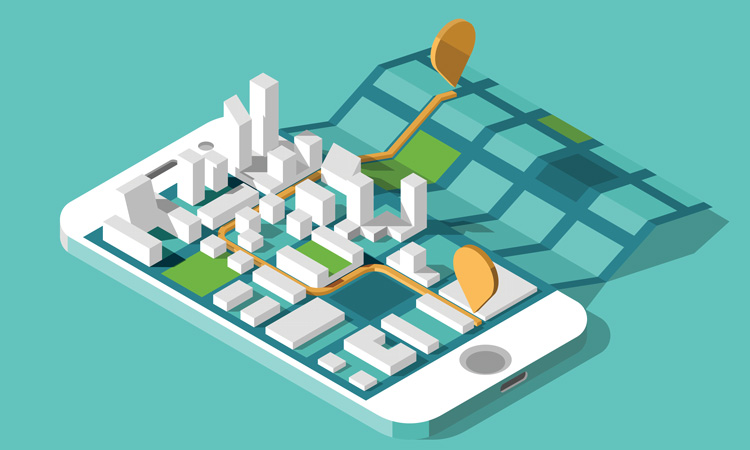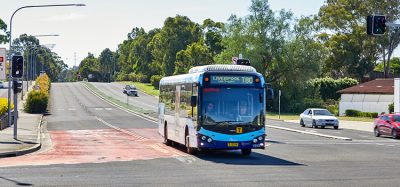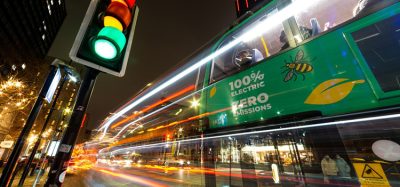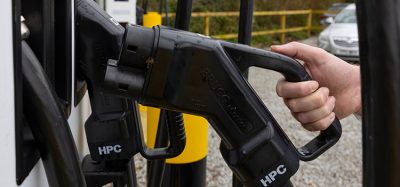How to approach innovation in urban mobility
- Like
- Digg
- Del
- Tumblr
- VKontakte
- Buffer
- Love This
- Odnoklassniki
- Meneame
- Blogger
- Amazon
- Yahoo Mail
- Gmail
- AOL
- Newsvine
- HackerNews
- Evernote
- MySpace
- Mail.ru
- Viadeo
- Line
- Comments
- Yummly
- SMS
- Viber
- Telegram
- Subscribe
- Skype
- Facebook Messenger
- Kakao
- LiveJournal
- Yammer
- Edgar
- Fintel
- Mix
- Instapaper
- Copy Link
Posted: 14 July 2020 | Jordi Ortuño Ribé - City of Barcelona | No comments yet
Jordi Ortuño Ribé, Mobility & Urban Innovation, City of Barcelona, explains what kind of considerations need to be taken into account by cities to enable innovation in the modern mobility market, as well as how these steps can support the economy and evolve a city’s transport ecosystem.


It is well known nowadays that most digital innovations deliver not only technological improvements in existing urban services and assets, but also create new ones that can lead to changes in societal behaviour – as well as disruptive changes to traditional economic systems.
Digital innovation today – reshaping economies
The shared economy and gig economy, as well as e-commerce, are just a few examples of the ways in which IT platforms are able to connect buyers and sellers in real time from anywhere in the world. Digital innovation has helped to create virtual markets where supply and demand are met with an ease never seen before, and as a consequence, has generated new business models that have forced commercial organisations to rethink existing ones.
Today, this type of innovation is so widespread that it is practically impossible, or at least very difficult, to generate new business models without considering digital platforms and their associated markets. There are no longer any business models that are generated and neglect technology, nor are there technologies that can exist without a business model that gives them meaning. The relationship between digital platforms and clear, sustainable business models are symbiotic, and as long as businesses realise this, it is now easier than ever to transform business initiatives into real business.
The complex urban mobility ecosystem
Among all the urban services and activities that cities and municipalities offer to citizens, urban mobility is probably the most commented on, studied, exploited and scrutinised of all. It has a significant impact on society and on our lives.
The ecosystem is incredibly complex, not only due to the number and variety of stakeholders involved in it, but also because of its capacity to directly influence citizens – not forgetting that the opposite is also true, as end users and their choices also have a significant impact on cities and policies.
One example of this is parking; when we enable parking payments via smartphone or credit card, we make the payment process itself simpler, but this will do nothing to encourage a change of behaviour from drivers in terms of their decision to use a car in the first place. The key to behavioural change is information; when we can provide information about available parking spaces and suggest shorter routes to destinations, we are making journeys easier. In this example, we are most likely influencing people to use a car and not considering the change of traffic flow or the opportunity to make mobility healthier by encouraging the use of another mode, but regardless, we’re helping citizens make a more informed decision. It could be just one between technological improvement and innovation that leads behavioural change – and identifying what is really new becomes crucial when introducing technology to cities.
In a time of climate action, it is also crucial to consider the environmental footprint whilst developing opportunities around faster, cheaper, safer and cleaner urban mobility.
When it comes to new business models in urban mobility, regulators and urban planners often find it difficult to keep pace with innovation. As a consequence, policy makers and urban mobility planners must be more reactive instead of proactively paving the way to the most appropriate and convenient ecosystem for the whole societies and citizens. We can find many examples of this in cities that have already deployed MaaS, car‑sharing, on-demand transport and PMV solutions – where the micromobiity market effectively occupies its own small ecosystem within urban mobility. It is becoming increasingly difficult to find the boundary between the public and private sectors as they now share so much of the same space.
Cities and public transport operators, in their role as public service providers, need to be somewhat cautious of this new paradigm. While creating the best operating conditions and helping encourage the adoption of new modes of transport, authorities and operators must also guarantee that public transport remains the backbone of urban mobility, promoting cleaner modes of transport and making services equitable and accessible to everyone.
In terms of technology, IT platforms are paramount in the creation of these new services, with their capacity to combine data, telecommunications and geolocation into more convenient and useful data – generally recognised as “the new oil” of not just mobility, but the global economy.
It isn’t only about data
The amount of data that today’s IT systems are able to manage is bigger than ever, and there’s every indication that we have not yet reached capacity in terms of what can be stored and managed in real time when it comes to data management. Not only can we store and process more data than ever, we can ‘move’ it faster than ever thanks to telecommunications technology. In addition, this information can also be properly geolocated – a key component in managing something like free-floating mobility services, for instance.
However, there must be recognition of the fact that most of the data being collected is being done so by mode of transport and there is therefore still a lack of insight when trying to understand the big picture of the mobility system as a whole. What’s more, this data comes from different sources – like sensors, cameras, wearable gadgets and smartphones – and in many different formats. When urban mobility planners and transport operators need to make a decision based on this data, it is essential that it is reliable and valuable.
In terms of management and planning, it’s paramount that authorities understand how people’s movement between modes of transport is changing and what that says about behaviour. Certain long-term decisions cannot be made using siloed data as it lacks context being outside the rest of the system as a whole, and subsequently offers authorities fewer insights.
In the short term, authorities need to be able to act in real time to unexpected scenarios even in examples that haven’t necessarily been experienced before. A valuable part of data management is knowledge and what to do with it – especially when it comes to decisions on new routes and services while balancing the capacity of urban space.
Knowledge that comes from data – that is ubiquitous thanks to the advances in telecommunications and geolocated thanks to current satellite systems – is helping to form a technological ecosystem capable of making the data appear as just the tip of the iceberg.
Where urban mobility is concerned, the expectations for advancement are well known – it must be cheaper to operate, cause less congestion, be faster, be more environmentally friendly, and be more considerate of the available urban space. Authorities often have the data required – what they lack is the knowledge, which must be provided by the required technological ecosystem that’s able to help transform data into knowledge.
The intersection between data and knowledge
Ambitions like the those being chased by the urban mobility sector require joint efforts and resources from all actors involved in urban mobility: cities, industry, universities and research centres, with their respective roles, objectives and expertise.
The aim of ‘data to knowledge’ is to have a vendor agnostic platform that can digest in real time any kind of mobility data and unlock its potential by extracting its usable and exploitable value and knowledge, thereby facilitating public institutions to actively manage and advance mobility in our cities.
Transitioning from data to knowledge should be a process during which urban mobility planners, ICT professionals and data scientists come together to share their expertise, as they’re ultimately pursuing the same objectives. With improved knowledge, authorities will be able to continue providing better, more affordable and equitable urban mobility services inside a very complex ecosystem where the main beneficiary should be our cities and citizens.
With a significant number of programmes in Europe promoting innovation and enabling the technological solutions to today’s mobility challenges, the necessary ecosystem is in our hands to make change happen.
Biography










